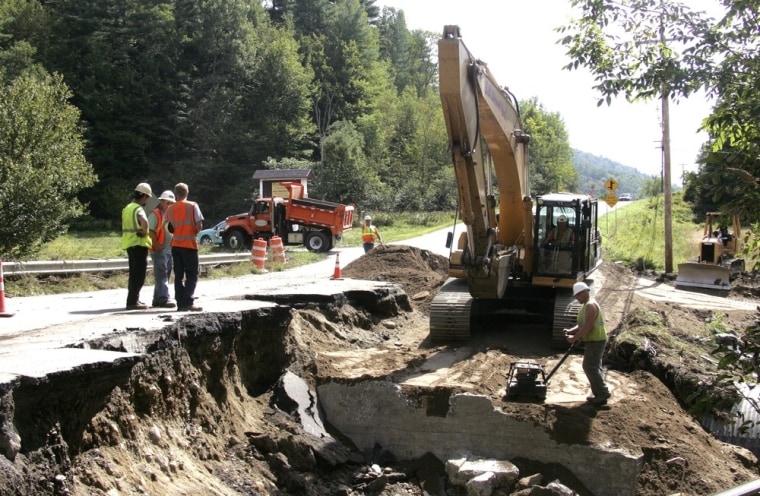With Hurricane Irene's floodwaters mostly gone, work crews across Vermont are scrambling to reopen roughly 200 miles of roads damaged by the storm before the fall tourist season that is important to the state's economy.
The arrival of fall will turn Vermont's trees brilliant shades of red, yellow and orange for a few short weeks, luring tourists who fan out across the rural state's two-lane highways to admire the view and spend money in local hotels, restaurants and shops.
If the roads are not ready, many worry, the tourists may stay home.
"We are approaching the all-important fall foliage season and then the winter ski season," said Tom Noordewier, an associate professor of business at the University of Vermont in Burlington. "Any falloff in visitors would be significant and have a potential impact that would be damaging."
Tourism accounts for 23 percent of Vermont's employment and 15 percent of overall economic activity.
Economists and state officials said it was too early to estimate how heavy the economic toll will be. Jeffrey Carr, the Vermont forecast manager for the New England Economic Partnership, a regional planning group, said costs would amount to "mega-millions of dollars."
"The foliage season is a very narrow window ... which is extremely important to our tourism season and if people think they are not going to be able to drive around, they will change their mind and go other places," said Carr, who also advises the administration of Governor Peter Shumlin.
Some 25 bridges, including river crossings on three major state highways, remain closed, according to the Vermont Agency of Transportation's website. Another 30 miles of road were open only to emergency vehicles.
The remnants of Hurricane Irene dumped roughly 8 inches of rain on the mountainous state on Sunday, swelling rivers that tore up roadways and flooded homes and businesses.
The damage is confined to isolated pockets, typically the lowest points of river valleys.
Heavy vehicles and dump trucks are visible across the state, and authorities say reopening roads is a top priority.
But the widely scattered road closures confound even those who know the state well.
"You can still get places, but it takes twice as long," said Alan Washburn, who owns a business in Brattleboro that services commercial fire-sprinkler systems.
By the end of the week, state tourism officials had launched an online marketing campaign to emphasize that the state remained open for business. They pointed out that the northern half of the state, including areas around Vermont's largest city, Burlington, received less storm damage.
"Many of our foliage communities were untouched," said Vicky Parra Tebbetts, senior vice president of the Vermont Chamber of Commerce. "People may need to make some careful choices, but it's certainly a safe place to come."
That hope was small consolation for business owners in towns served by roads that remain largely closed to traffic.
"This weekend is a loss, because they're asking people not to come up, even though it's Labor Day weekend," said Betsey Reagan, owner of Dot's Too Diner in West Dover. "I'm not sure what the fall will be like. I don't know."
